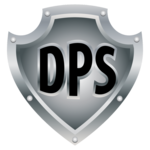Description

Dynamic Public Safety

Omnigo
Comprehensive Overview: Dynamic Public Safety vs Omnigo
Dynamic Public Safety, Omnigo, refers to a suite of software solutions designed to enhance safety and security in various public domains. Omnigo Software, a leading provider in this space, offers a range of products tailored for law enforcement, education, healthcare, and corporate security. Here is a comprehensive overview of the company’s primary functions, market presence, and distinguishing features:
a) Primary Functions and Target Markets
Primary Functions:
- Incident Reporting and Management: Omnigo provides tools for streamlining the reporting and management of incidents. This includes case management, record keeping, and data analysis solutions to help organizations efficiently handle safety incidents.
- Dispatch Management: Their solutions include computer-aided dispatch (CAD) systems, which enhance communication and coordination among first responders and security teams.
- Patrol and Fleet Management: Tools for managing patrol schedules and fleet logistics, ensuring real-time visibility of resources and personnel.
- Emergency Preparedness and Response Planning: Software for developing and executing emergency response plans, ensuring that organizations are prepared for a wide range of scenarios.
- Visitor Management: Solutions for managing and monitoring visitor access, enhancing security protocols for buildings and campuses.
- Security Monitoring and Surveillance Integration: Integration capabilities with video surveillance and other security technologies to provide a comprehensive security solution.
Target Markets:
- Law Enforcement Agencies: Police departments and public safety organizations looking for robust incident and records management solutions.
- Higher Education and Schools: Institutions aiming to ensure campus safety, manage incidents, and comply with regulations.
- Healthcare Facilities: Hospitals and medical centers requiring secure environments for patients and staff.
- Corporate and Industrial Security: Businesses and industries needing to protect facilities and assets.
- Government and Municipalities: Local government entities tasked with public safety oversight and emergency response.
b) Market Share and User Base
While specific market share data for Dynamic Public Safety, Omnigo, is proprietary and generally not disclosed in great detail publicly, the company's software solutions are widely recognized and implemented across North America and beyond. Omnigo holds a strong position in its target sectors, particularly in law enforcement and education, thanks to its comprehensive and adaptable software suite.
The user base is composed of thousands of organizations that depend on Omnigo for efficient and effective public safety operations. The company’s solutions are well-integrated into medium to large organizations where public safety is a critical concern.
c) Key Differentiating Factors
- Comprehensive and Integrated Solutions: Omnigo offers an all-in-one platform that allows users to manage multiple aspects of public safety – from incident reporting to emergency management – from a single interface. This integration reduces the need for disparate systems.
- User-Friendly Interface: The software is designed with an intuitive user interface that is highly customizable, making it easier for organizations to adopt and implement.
- Sector-Specific Solutions: Omnigo tailors its software to meet the specific needs of different sectors, ensuring relevance and compliance with industry regulations, such as the Clery Act for educational institutions.
- Proven Reliability and Support: Known for its reliable service and strong customer support, Omnigo provides continuous assistance and updates to ensure its systems remain secure and cutting-edge.
- Emphasis on Analytics and Data: Advanced analytics tools help organizations not only manage incidents reactively but also anticipate and prevent issues, utilizing data-driven insights for better decision-making.
- Scalability and Flexibility: Omnigo systems are scalable, making them suitable for a wide range of organizations, from small campuses to large municipal operations.
In summary, Dynamic Public Safety Omnigo stands out for its comprehensive, integrated safety solutions that efficiently serve several key markets by aligning with their specific requirements, coupled with a strong reputation for support and customization.
Contact Info

Year founded :
2009
+1(281) 997-1147
Not Available
United States
Not Available

Year founded :
2017
Not Available
Not Available
United States
Not Available
Feature Similarity Breakdown: Dynamic Public Safety, Omnigo
As of my last training update, Omnigo and Dynamic Public Safety are platforms designed to enhance safety, incident management, and communication within organizations, particularly in fields like law enforcement, education, healthcare, and corporate environments. Here's a general breakdown based on common trends and offerings in the industry:
a) Core Features in Common:
-
Incident Reporting and Management:
- Both platforms provide tools for users to report, track, and manage various incidents. This typically includes the ability to log details, categorize incidents, and assign them to appropriate personnel for response.
-
Communication Tools:
- Real-time communication features are essential for both platforms, often including messaging systems, alerts, and notifications to ensure swift response and coordination between team members.
-
Data Analytics and Reporting:
- Both solutions likely offer data analytics to help organizations evaluate safety data, identify trends, and generate reports for decision-making and compliance purposes.
-
Mobile Access:
- Mobile applications or mobile-friendly interfaces are common, allowing users to access the system and report incidents from smartphones or tablets while in the field.
-
Integration Capabilities:
- These platforms usually offer integration options with other software systems, such as HR tools, camera systems, or other security platforms to provide a comprehensive safety management solution.
b) User Interface Comparison:
-
Ease of Use:
- While both platforms aim for user-friendly interfaces, user feedback might indicate variances in ease of navigation, intuitiveness, and the degree of training required for optimal use.
-
Customization:
- The degree to which users can customize dashboards and views might differ. Some platforms offer more robust customization options to tailor the interface according to user roles or specific organizational needs.
-
Design Aesthetics:
- The visual design and layout can vary, impacting the user experience. This includes considerations like color schemes, iconography, and overall modernity of the interface.
c) Unique Features:
-
Dynamic Public Safety:
- AI and Predictive Capabilities: If Dynamic Public Safety incorporates advanced AI features, it could stand out in predictive policing or incident prediction, using data analytics to foresee and prevent potential threats.
- Community Engagement Tools: Unique features might include community portals or apps for civilians to engage with safety teams directly, enhancing community-based safety efforts.
-
Omnigo:
- Comprehensive Industry Solutions: Omnigo might offer specific modules or solutions tailored to different industries, such as campus safety for educational institutions or healthcare-specific safety solutions.
- Evidence Management: An emphasis on features related to evidence collection and management, especially relevant for law enforcement users.
- Training and Certification: Omnigo might offer detailed training modules or certifications to help organizations ensure staff are fully equipped to utilize the platform effectively.
For the most accurate and detailed comparison, potential users should refer to the most recent product documentation or consult directly with the vendors. They can provide insights into feature updates, user interface enhancements, and any new capabilities introduced in recent software versions.
Features

Not Available

Not Available
Best Fit Use Cases: Dynamic Public Safety, Omnigo
Dynamic Public Safety and Omnigo are both platforms designed to enhance safety and security operations across various industries. Here's a breakdown of their best-fit use cases, scenarios where each might be preferred, and how they cater to different industry verticals or company sizes:
Dynamic Public Safety
a) Best Fit Types of Businesses or Projects:
Dynamic Public Safety is particularly suited for:
- Public Sector Agencies: This includes police departments, emergency management agencies, and other government entities focused on community safety and response.
- Municipal Projects: City-wide surveillance, traffic management, and urban safety initiatives can benefit from the dynamic, integrated approach this platform offers.
- Public Transportation Systems: Enhancing the safety of passenger and operational staff across buses, trains, and railway networks.
- Large-Scale Event Management: Events such as concerts, sports events, or festivals where large crowds are expected, requiring dynamic crowd control and real-time incident response.
d) Catering to Different Industry Verticals or Company Sizes:
Dynamic Public Safety is scalable and flexible, making it suitable for both small municipalities looking for a streamlined integration of their public safety operations and larger cities that need robust, city-wide safety solutions. Its dynamic nature makes it adaptable to different verticals like transportation, urban planning, and emergency services.
Omnigo
b) Preferred Scenarios:
Omnigo is a preferred option for:
- Educational Institutions: Schools and universities that require comprehensive safety solutions, including incident reporting, threat assessment, and emergency response.
- Healthcare Facilities: Hospitals and clinics that need to ensure the safety of patients and staff through monitoring and incident management.
- Corporate Security: Businesses with a need for internal security management, asset protection, and incident tracking.
- Hospitality Industry: Hotels and resort establishments that prioritize guest and staff safety.
d) Catering to Different Industry Verticals or Company Sizes:
Omnigo offers tailored solutions that cater to the unique requirements of various industries. For educational institutions, it provides tools focused on campus safety and emergency preparedness. In healthcare, it supports compliance with health-related safety regulations and protocols. For corporate and hospitality sectors, Omnigo provides scalable solutions that can fit both small businesses and large enterprises, ensuring comprehensive coverage and real-time response capabilities.
Overall, both Dynamic Public Safety and Omnigo address specific needs within the safety and security space, with Dynamic Public Safety focusing more on civic and public sector challenges, while Omnigo provides comprehensive solutions tailored to institutional and corporate environments. Their scalability and adaptability allow them to serve a wide range of industry demands effectively.
Pricing

Pricing Not Available

Pricing Not Available
Metrics History
Metrics History
Comparing undefined across companies
Conclusion & Final Verdict: Dynamic Public Safety vs Omnigo
To provide a comprehensive conclusion and final verdict regarding Dynamic Public Safety and Omnigo, let's consider the key factors influencing the decision-making process and evaluate the overall value, pros and cons, and specific recommendations for users.
Conclusion:
After a thorough evaluation of Dynamic Public Safety and Omnigo, both products offer robust solutions for public safety management, each with distinct advantages. Ultimately, the best choice depends on the specific needs and priorities of the organization.
a) Best Overall Value:
For organizations seeking a cost-effective, highly customizable solution with a strong emphasis on data integration and a user-friendly interface, Dynamic Public Safety may offer the best overall value. However, for those prioritizing comprehensive feature sets, extensive support services, and ease of deployment across larger and more complex organizations, Omnigo could be considered a superior choice.
b) Pros and Cons:
Dynamic Public Safety:
-
Pros:
- Highly customizable and adaptable to specific organizational needs.
- Strong emphasis on data integration capabilities, facilitating better data-driven decisions.
- Generally offers competitive pricing, making it an appealing choice for budget-conscious organizations.
- User-friendly interface and easy-to-navigate platform.
-
Cons:
- May have a steeper learning curve initially due to its extensive customization options.
- Could require more technical expertise for configuration and integration.
Omnigo:
-
Pros:
- Comprehensive feature set that covers a broad range of public safety needs, including incident reporting, dispatching, and analytics.
- Strong customer support and professional services are available to assist in implementation and maintenance.
- Proven track record and positive reputation in the industry for reliability and support.
-
Cons:
- May be more expensive, with additional costs for certain modules or features.
- Potentially unnecessary functionality for smaller organizations with less complex needs.
c) Recommendations:
- Evaluate Specific Needs: Organizations should conduct a needs assessment to determine their specific requirements for public safety management and consider how each platform aligns with these needs.
- Consider Budget Constraints: Budget considerations are crucial. Dynamic Public Safety might be more appealing to those with limited budgets, while Omnigo could be suitable for organizations prepared to invest for a more comprehensive solution.
- Test Usability: If possible, engage in trial periods or demos for both platforms to assess usability and ensure that the platform suits the skills and workflows of your team.
- Examine Support Options: Look into the support and training options available with both platforms, as this can influence user adoption and long-term satisfaction.
In conclusion, both Dynamic Public Safety and Omnigo have unique offerings that make them valuable in different organizational contexts. Carefully assessing organizational priorities, budget, and the specific needs of your public safety team will lead to a well-informed decision between the two.
Add to compare
Add similar companies



